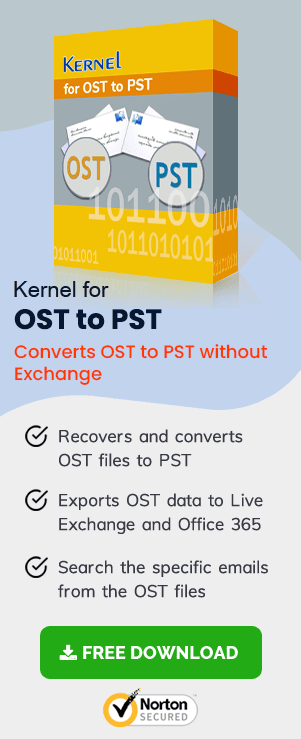Once in a while, Exchange users encounter situations like data deletion, mailboxes corruption, synchronization issues, etc. that demand manual recovery of mailbox utilizing Outlook. Exchange when configured with Outlook application generates a replica of its mailboxes that are stored locally in the Offline Storage Table or OST. The name is so as it allows users to access and edit mailboxes content even offline. The data within an OST file is as updated as Outlook was last in synchronization with the Exchange Server. Thus, it is possible to recover a mailbox from an OST file using the Outlook application.
Fortunately, manual mailbox recovery can be performed using OST files, as they carry replicas of Exchange folders offline, therefore the user can obtain required Exchange data from them easily.
In this guide, we will show you how to easily recover a mailbox using an OST file in two different scenarios.

Try automated tool OST Recovery to recover deleted mailbox from OST file and save them in PST, DBX, MBOX, MSG, HTML, XHTML, PDF format.
Scenario 1: When the original Microsoft Exchange profile was not modified
In this case, you can start the Microsoft Exchange client offline with the old OST file. This way you can recover the data by moving the messages from the OST to a PST file.
Here are the steps to recover:
- Open Exchange Email application (Outlook) in offline mode
- Click on File menu > Open & Export > Import/Export
- Import & Export wizard will appear, click on Export to a file > Outlook data file (.pst)
- Choose the OST folders which contain the required Exchange information and click Next button
- Browse the location where you want to save the recovered data, and then click the finish button.
The messages are exported to the newly created PST. After this, you can copy and import the messages from the PST back to the server-based mailbox.
Scenario 2: If the original Microsoft Exchange profile was deleted, modified or lost
In this case, any accidental deletion of the Exchange Server mailbox or any modification to the Exchange profile will orphan the Outlook OST file. This orphaned OST file is useless as it cannot be synced to extract information.
The only possible way is to recreate synchronization between Microsoft Exchange Server and Outlook OST through the unique MAPI address.
- Connect Outlook with the original MAPI
- Connect the MAPI address to original Microsoft Exchange Server.
If you are dealing with old OST files or Exchange corruption, having the original MAPI address is highly unlikely. Similarly, if the OST file itself is in a bad or corrupt state, then it’s almost useless.
Scenario 3: If the Exchange mailbox gets deleted accidentally
If the case is such that you have accidentally deleted your Exchange mailbox and you have not taken any recent backup? The perfect solution recommended in such a scenario is a third-party solution – OST Recovery, to recover and restore deleted Exchange mailbox from OST file.
Follow the quick steps one by one mentioned below to recover the mailbox:
STEP 1: Launch OST Recovery Software and click Browse to select OST file for recovery.
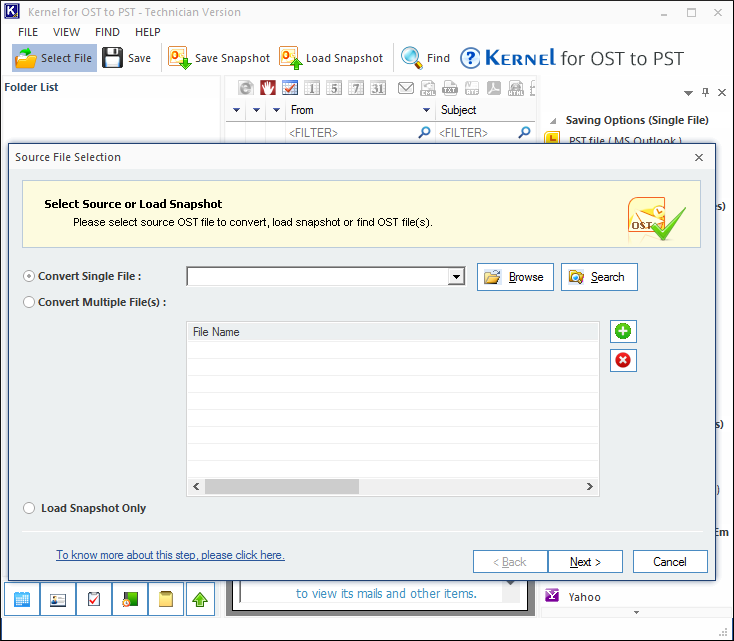
STEP 2: You can select a single as well as multiple corrupted or damaged OST files from your local machine for recovery.
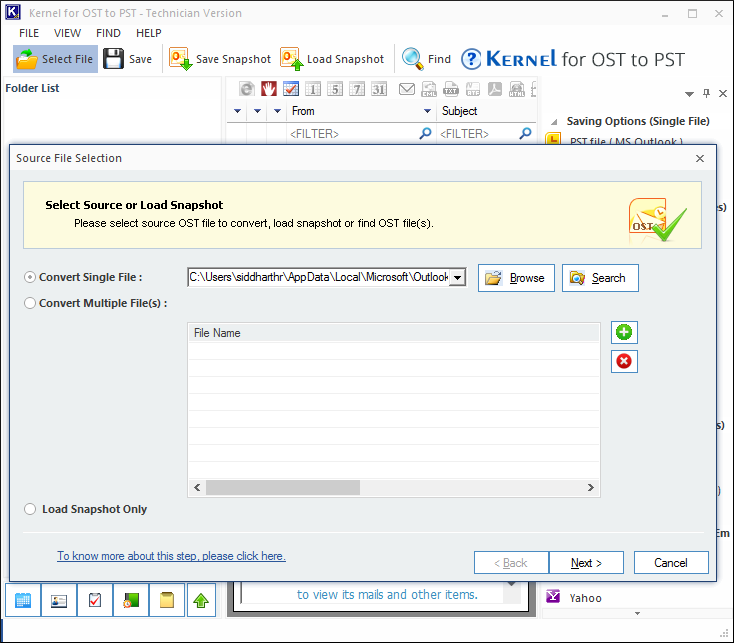
STEP 3: A complete preview of OST file items is displayed by the OST recovery software.
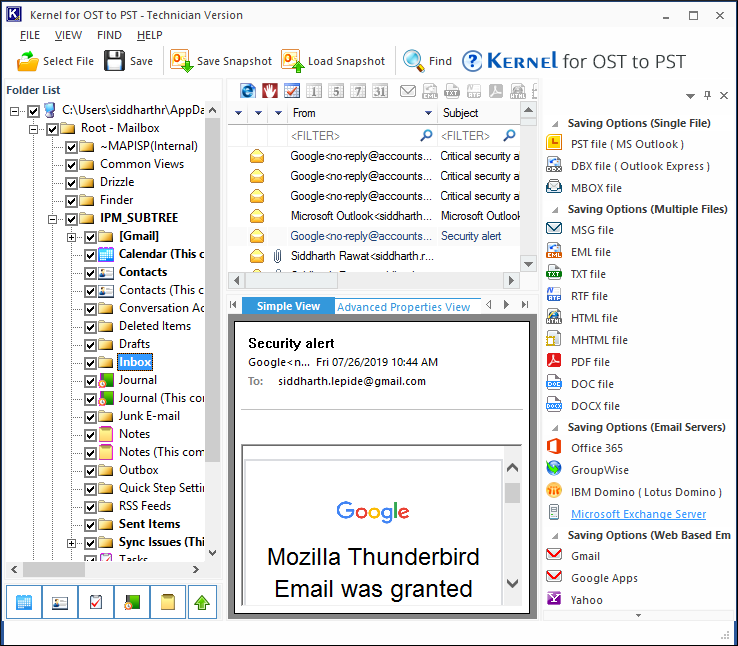
STEP 4: Save individual email items by right-clicking on the specific email as shown below in the desired format.
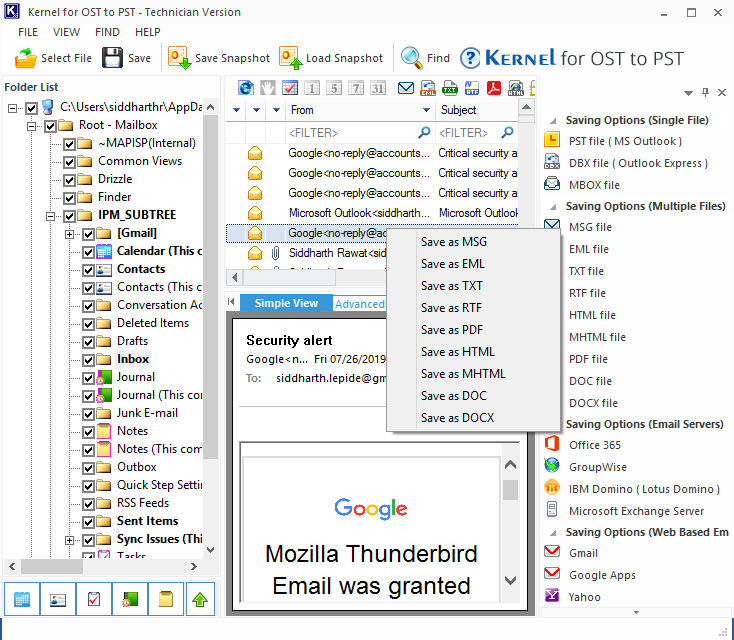
STEP 5: Select the PST file as Output to save the complete recovered data. You can also choose any desired output type as per your requirement from the saving options.
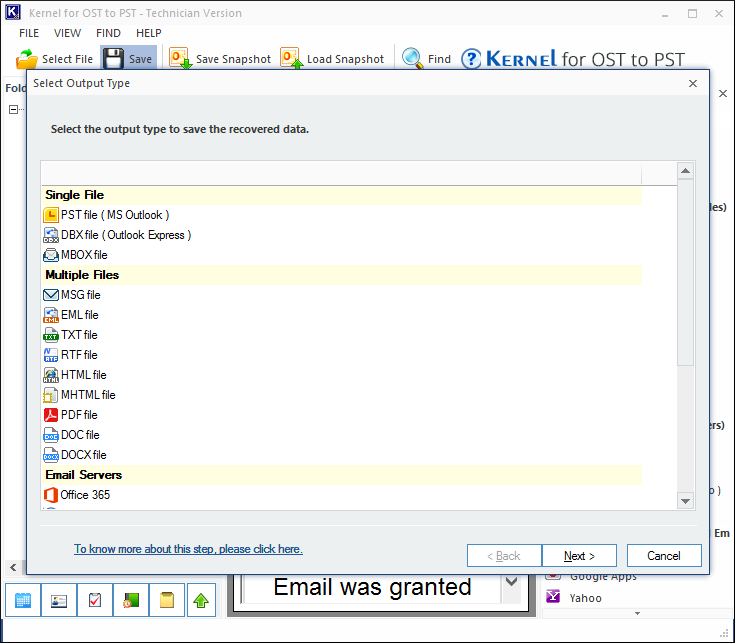
STEP 6: Finally, select the desired location to save the recovered OST mailbox data to PST file on your local machine.
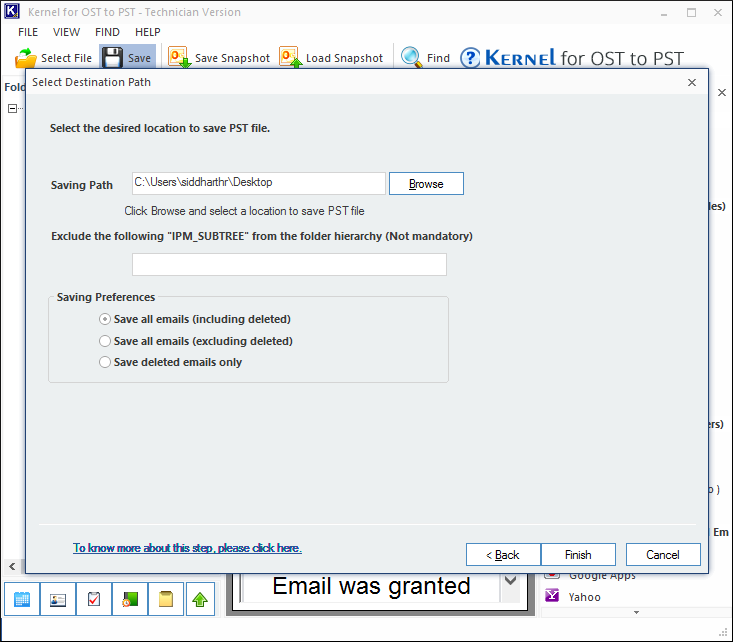
Conclusion
Recovering a mailbox from an OST file can be an easy process to do natively if the situation is a straight forward one. However, if you’re looking at a more complex environment or unable to access OST in MS Outlook or Exchange server then it may make more sense to deploy OST Recovery. The solution makes it easy to restore OST files to either a live Exchange server, a new PST file or to a pre-existing PST file as needed.

